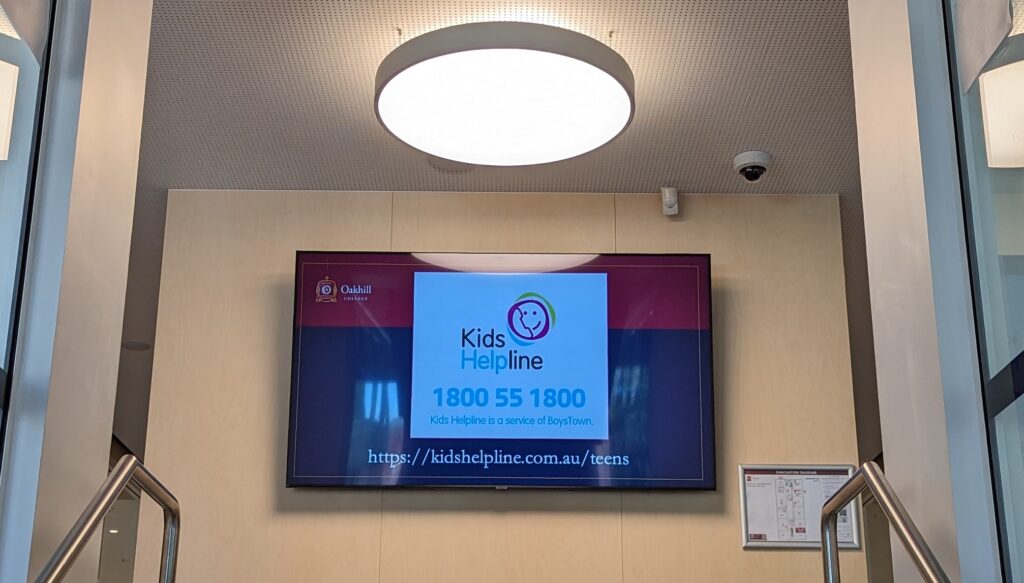
Today’s students face a growing number of challenges outside the classroom. According to SAMHSA, over two-thirds of children report experiencing at least one traumatic event by age 16. These experiences can affect their well-being, behavior, and ability to thrive in school.
In this blog, we look at the principles of trauma-informed teaching and show you how technology can help create a safe, supportive, and engaging learning environment for students impacted by trauma.
What is trauma-informed teaching?
Trauma-informed teaching recognizes that students don’t arrive at school as blank slates. They bring with them a range of experiences, some of which may involve trauma. This could include anything from experiencing or witnessing violence and bullying to dealing with poverty or family instability. These experiences can have a profound impact on a student’s ability to learn, engage in the classroom, and form healthy relationships.
The principles of trauma-informed teaching encourage educators to shift their perspective from “What’s wrong with this student?” to “What happened to this student?” This shift in thinking is essential for creating a learning environment that is truly responsive to the needs of all students.
Let’s take a closer look at the core principles of trauma-informed teaching:
- Safety: Creating a physically and emotionally safe environment where students feel secure, respected, and protected.
- Trustworthiness and transparency: Building trust between students and staff by being reliable, consistent, and open in communication.
- Peer support and collaboration: Fostering a sense of community and belonging through peer support networks and collaborative activities.
- Empowerment and choice: Giving students a voice and choices in their learning to promote agency and self-efficacy.
- Cultural awareness and sensitivity: Recognizing and respecting the diverse backgrounds and experiences of all students.
By embracing these principles, schools can create a foundation for addressing the impact of trauma and supporting the well-being of every student.
Trauma-informed teaching strategies
Putting trauma-informed teaching into action requires a shift from simply knowing about trauma to implementing specific strategies that support students. Here are ten key practices that can make a real difference:
1. Create safe spaces for expression
Designate areas within the school, such as a calming corner or regular support group, where students feel comfortable sharing feelings and experiences.
2. Build strong relationships
Foster positive and supportive classroom environments where students feel connected to both their teachers and peers. Take time to build rapport, listen, and celebrate successes.
3. Adapt to individual student needs
Acknowledge that trauma can impact academic performance and emotional regulation. Offer flexible assignments, breaks, and use differentiated instruction for varying needs.
4. Teach emotional regulation skills
Provide students with tools like mindfulness exercises, breathing techniques, and conflict resolution strategies to help them manage their emotions in healthy ways.
5. Collaborate with families and communities
Establish strong partnerships with parents, caregivers, and community organizations to create a robust network of support for all students.
6. Provide professional development
Ensure staff receive ongoing training on trauma-informed practices. This includes how to recognize signs of trauma, respond effectively, and cultivate a supportive school culture.
7. Prioritize restorative practices
Shift away from punitive discipline models toward restorative approaches. Focus on repairing harm, building relationships, and promoting accountability for actions.
8. Use trauma-informed language
Be mindful of the language used in school communications and when interacting with students. Prioritize positive and supportive language that avoids triggering or re-traumatizing.
9. Create predictable routines
Provide a sense of stability and predictability for students who may have experienced trauma by establishing and maintaining consistent routines and schedules.
10. Promote self-care for staff
Working with students who have experienced trauma can be emotionally demanding. Encourage staff to prioritize self-care and to seek support when needed.
The role of technology in trauma-informed teaching
While technology is not a cure-all, it can be a powerful tool for creating a more trauma-informed learning environment. When used thoughtfully and strategically, technology can help educators:
- Amplify student voices: Digital platforms offer students multiple avenues to share their thoughts, feelings, and experiences. This can be particularly beneficial for students who may feel hesitant to speak up in traditional classroom settings. Blogs, digital portfolios, and multimedia projects can become powerful outlets for expression and connection.
- Facilitate personalized learning: Technology can deliver individualized learning paths and tailored support, allowing students to learn at their own pace and in ways that best suit their needs and learning styles. Adaptive learning platforms and educational apps can provide customized instruction and practice, while also giving educators valuable insights into student progress.
- Enhance communication and collaboration: Digital communication tools can establish open and accessible channels for communication between teachers, students, and families, fostering a sense of connectedness and support. Instant messaging platforms, video conferencing, and learning management systems can be used to share updates, provide feedback, and answer questions in a timely and efficient manner.
- Promote social-emotional learning (SEL): Educators can integrate digital tools and resources specifically designed to help students develop crucial social-emotional skills. Interactive games, virtual simulations, and online mindfulness exercises can teach students about self-awareness, self-regulation, social awareness, relationship skills, and responsible decision-making.
- Create a sense of community: Online platforms and digital tools can help build a stronger sense of community within the school. Virtual assemblies, online clubs, and student-led forums can provide opportunities for students to connect with their peers, share their interests, and feel a sense of belonging.
The key is to choose technologies that align with the principles of trauma-informed teaching and support the specific needs of your school community.
How Vivi supports trauma-informed practices
Schools are embracing a powerful truth: Learning flourishes best in environments where every student feels safe, supported, and understood. Vivi empowers educators to put this truth into action, creating trauma-informed learning environments where every student can thrive. Here’s how:
- Warm welcomes, every day: Vivi’s digital signage transforms school spaces into vibrant hubs of positivity. Teachers can start each day with uplifting messages, highlighting student artwork to celebrate diversity, and use announcements to reinforce kindness and inclusivity.
- Student voices, front and center: Every student deserves to feel heard. With Vivi’s interactive tools, teachers can quickly gauge understanding during lessons, check in on how students are feeling, and encourage open communication through anonymous feedback – empowering every student to share their thoughts and feelings comfortably.
- Safety you can count on: When emergencies happen, clear communication is key. With Vivi’s emergency alerts, important messages and instructions can reach every corner of campus in seconds – minimizing confusion and helping everyone feel safe, informed, and prepared.
- Students in the driver’s seat: Learning is most powerful when students feel a sense of ownership. Vivi’s wireless screen mirroring makes it easy for students to lead presentations, share their work, and actively take part in class – building confidence and agency.
- Creating predictability and routine: Change can be tough, and routines can be incredibly calming. Vivi helps create a predictable and supportive environment with visual schedules, friendly reminders, and clear instructions displayed throughout the school – minimizing anxiety and supporting smooth transitions.
- Support is always in sight: Let students know they’re not alone. Use Vivi’s digital signage to share links to helpful resources, such as calming techniques, mental health helplines, and school counseling information. Putting this information front and center makes it easy for everyone to find the support they need.

Oakhill College displays the Kids Helpline using Vivi’s digital signage
The Vivi advantage
Choosing the right technology can be a game-changer for your school. But it’s about more than just bells and whistles—it’s about finding a partner who understands the unique needs of educators and students.
Vivi empowers you to unlock the full potential of technology in your school. Our platform is built for educators, with simple yet powerful tools to inform, engage, and inspire. And it’s more than just sharing announcements—Vivi can be a key part of your strategy for creating a more supportive and inclusive school environment.
Interested in maximizing your digital signage? Download our free guide, “Getting the Most Value from Your Digital Signage.” Learn to:
- Craft compelling content that engages and delivers results.
- Optimize your investment in display technology.
- Enhance learning, culture, and safety with digital signage.
- Foster a supportive environment for all students.



